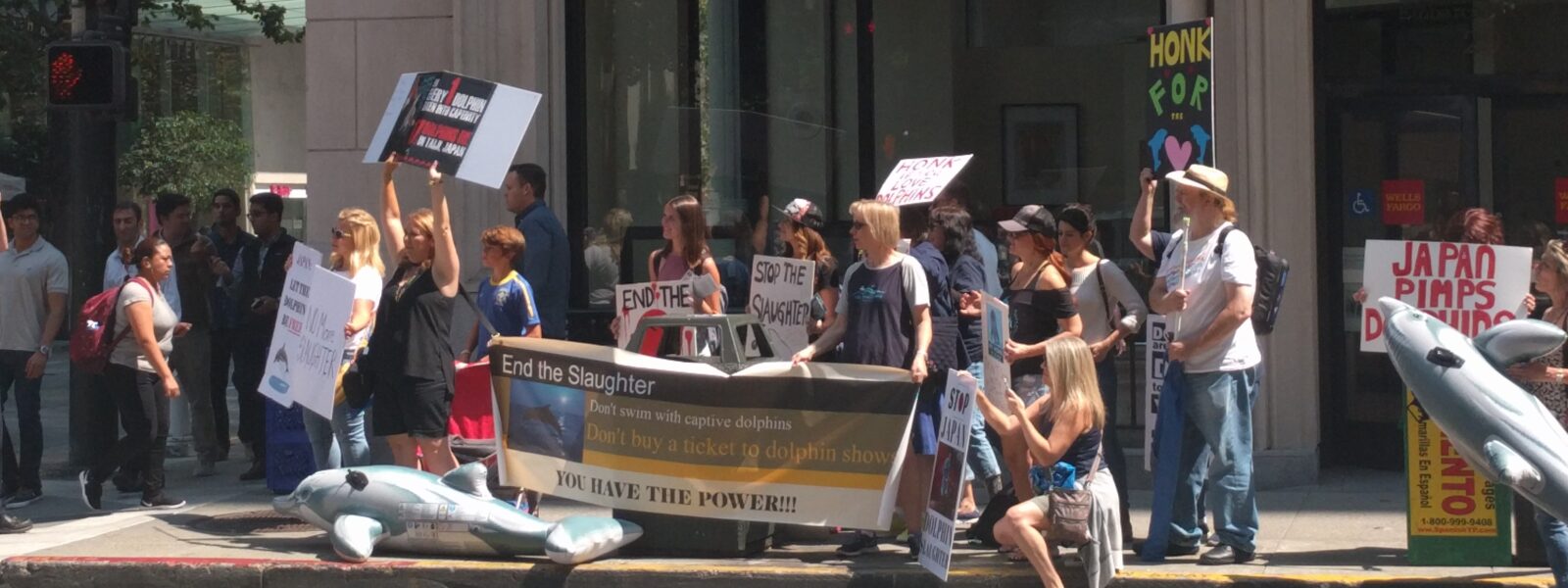

As protesters around the world gathered in front of Japanese Embassies and Consulates on Sept. 1st, the opening of the notoriously cruel dolphin drive hunts in Taiji, Japan, a pod of pilot whales marked the first victims of the Japanese hunters efforts for the 2017-2018 hunt season.
The International Marine Mammal Project joined with several other organizations in downtown San Francisco during a record heat wave to protest the beginning of the dolphin hunt season. Similar demonstrations were held in many other cities around the globe.
IMMP and 22 environmental and animal welfare organizations had sent a letter to Japanese Prime Minister Shinzo Abe urging him to end the killing of dolphins and whales in Taiji and on the high seas by Japan’s so-called “scientific” whaling. http://savedolphins.eii.org/news/entry/23-environmental-animal-welfare-orgs-ask-japan-to-end-dolphin-hunts
Tellingly, the Japanese Consul’s office in San Francisco, for the first time since IMMP and other groups began the Japan Dolphins Day protests in 2005, refused to meet with IMMP staff to receive a copy of the letter to Prime Minister Abe. They insisted they could not meet, and instead offered for IMMP to mail the letter to them.
We believe this is indicative of the overall crack-down in Japan against dolphin and whale activists, which has seen many activists detained at the border and sent back to their home countries without being allowed to enter Japan. Further harassment and expulsions of anti-whaling activists are expected.
The first two days of the hunt were too windy for the hunters to get very far or find any dolphins or small whales. However, on the third day (Sept. 3rd), the hunters were able to find a pod of more than 30 pilot whales, according to CetaBase http://www.cetabase.org , and herd into the Cove (made famous by the shocking documentary, “The Cove”).
On Sept. 4th, around ten were slaughtered and three juveniles were removed for sale to aquariums for a life of captivity. Past evidence indicates that many of these juvenile dolphins will die premature deaths in captivity. Most dolphins brokered through Taiji for aquariums and amusements parks are destined for parks in Japan or China, with many being sold to other countries as well. Reportedly, a number of the juveniles were released back into the ocean by the hunters, but their prospects for survival is doubtful without the rest of the pod to protect them.
Also according to CetaBase, the quota for this year is 1,940 dolphins and small whales for the town of Taiji, set by the Japan Fisheries Agency. This year, two additional species were added to the quota, melon-headed whales and rough-toothed dolphins. Last year’s quota was 1,820 dolphins and small whales.
The hunts are expected continue for about six months, ending around the end of February (except for a couple of months of harpoon hunting for pilot whales into April).
Photo by Sarah Elzea.